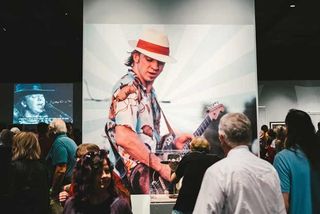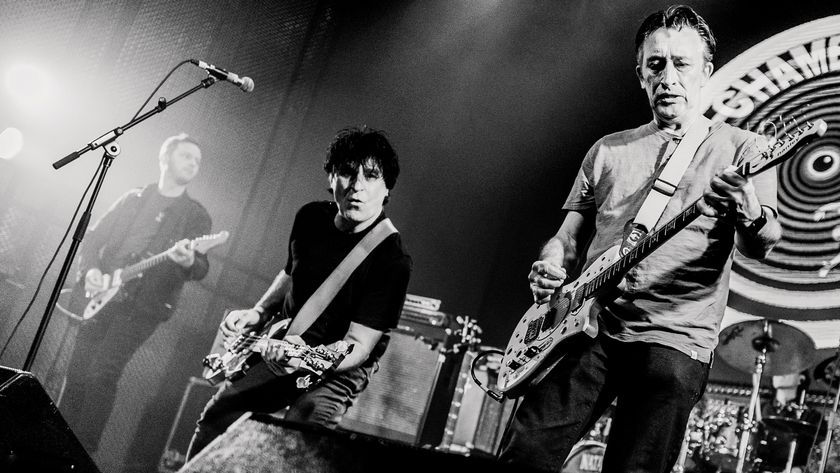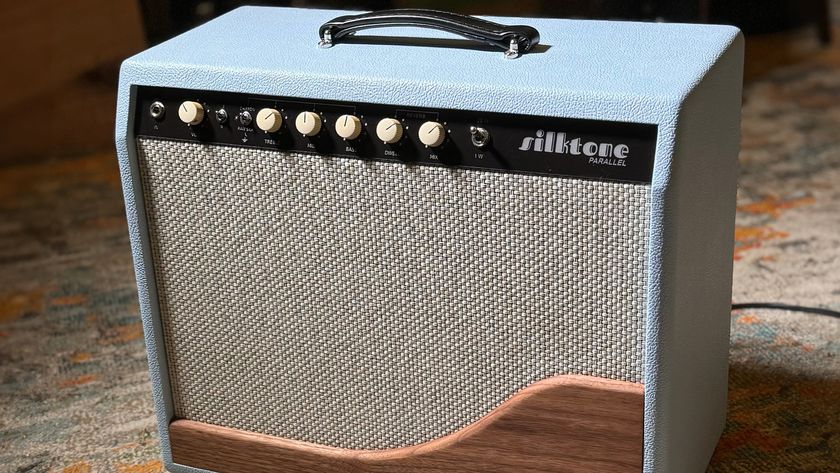
The spirit of Stevie Ray Vaughan has never left Austin, Texas. Now, almost 27 years after his death, some of his most treasured and iconic possessions are on display in his adopted hometown for all to see.
Pride and Joy, The Texas Blues of Stevie Ray Vaughan, an exhibit curated by the Grammy Museum in cooperation with Vaughan’s estate, headed by his brother Jimmie, is on display at the Bullock Museum in Austin through July 23.
The exhibit includes several guitars, including Vaughan's "Number One" Fender Stratocaster, as well as stage outfits, including his iconic hat and Indian headdress, family photographs, original concert posters, handwritten lyrics and exclusive archival concert footage.
“This was a great way to share Stevie’s things with the public, who love him so much and are such great fans and want to get close to him,” Jimmie Vaughan says. “I understand that and I’m glad we can do this for them—and I’m sorry it took me so long, but I really needed that much time to be able to handle it.”
Vaughan says he was pushed toward action several years ago when he discovered someone was breaking into the storage space where he keeps Stevie’s belongings and slowly stealing items. He adds that Grammy Museum Executive Director Bob Santelli’s gentle but persistent prodding was a great asset, as was the subsequent work by museum staff and his wife Robin. Their support and effort assured that the exhibition came together even as he at times struggled with the emotions of choosing what of his brother’s mementos told the right story.
“I just couldn’t bear to do it before,” Vaughan says. “I’d go look at his stuff and want to organize it and let people see it, but it was too hurtful. That probably seems crazy to everyone, but when he died the way he did, I just couldn’t deal with it and I didn’t know what to do. I eventually decided it was important for me to try and live my life. He’s my little brother and I think if you look at it like that it makes more sense. It just took me this long to be able to go through and do something like this.”
Pride and Joy opened at the Grammy Museum in Los Angeles in 2014 and has also been shown at the Woody Guthrie Center in Tulsa, Oklahoma, and the Delta Blues Museum in Clarksdale, Mississippi. The Bullock exhibit has an added section covering some of Stevie’s musical heroes, including the guitars of Lonnie Mack and Clarence “Gatemouth” Brown. This was just the latest example of Jimmie celebrating the history of the music and musicians who inspired him and his brother.
Get The Pick Newsletter
All the latest guitar news, interviews, lessons, reviews, deals and more, direct to your inbox!
“This is the Texas State Museum, so school kids come in every day and I wanted them to see where Stevie came from and to understand the importance of these great musicians who inspired us,” Vaughan says.
For more information, visit thestoryoftexas.com, and be sure to check out our opening-day photos below (courtesy of Elizabeth Page/Bullock Creative).
Alan Paul is the author of One Way Out: The Inside History of the Allman Brothers Band.









Alan Paul is the author of three books, Texas Flood: The Inside Story of Stevie Ray Vaughan, One Way Way Out: The Inside Story of the Allman Brothers Band – which were both New York Times bestsellers – and Big in China: My Unlikely Adventures Raising a Family, Playing the Blues and Becoming a Star in Beijing, a memoir about raising a family in Beijing and forming a Chinese blues band that toured the nation. He’s been associated with Guitar World for 30 years, serving as Managing Editor from 1991-96. He plays in two bands: Big in China and Friends of the Brothers, with Guitar World’s Andy Aledort.

“We had 15 minutes left, and it was time to go… I just started playing that riff. Then Lenny goes, ‘Whoa, what’s that?’”: Lenny Kravitz guitarist Craig Ross reveals the serendipitous roots of a Kravitz classic

“The concept of the guitar duel at the end was just appalling”: Crossroads is an essential piece of '80s guitar lore, but not every guitar legend was a fan of the film








